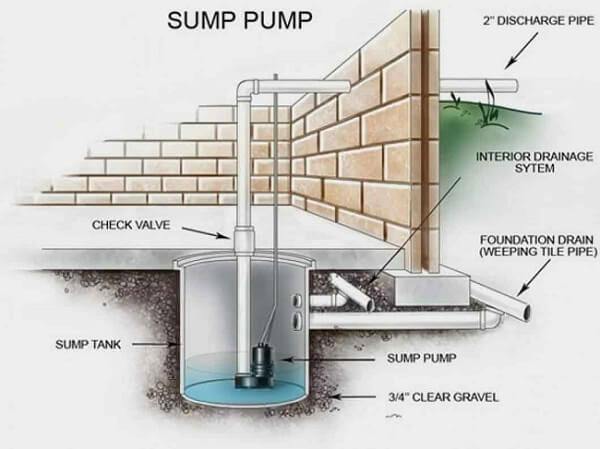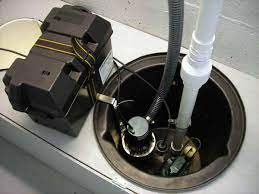What is a Sump Pump?
A sump pump protects your basement, or other ground or below-ground level floor, against flood and water damage. Consisting of a motor unit with water-level or pressure sensing valves, it can pump water out of one area and discharge it into another area well away from your home. Sump pumps are subterranean and are typically placed in a constructed pit (also called a “basin”) below your floor.
Water drains into and collects in this pit, and then is pumped back out. This makes sump pumps an inconspicuous and convenient way to remove unwanted water from your home. There are several models of sump pumps available, allowing you to choose which will best meet your needs, but all operate under the same essential principles and mechanics.

Why Do I Need a Sump Pump?
If your basement, crawl space or any other ground-level building is prone to flooding or water buildup, you need a sump pump. Left unattended, water can cause serious damage to your possessions and to the infrastructure of your home.
Warping, toxic mold growth and the weakening of your home’s structural integrity—whether by means of rot or cracks in your foundation—can all result from water damage. Whether you’re dealing with floods, heavy rainfall or the standard basement moisture, installing a sump pump can ensure that your home stays dry, undamaged and free of mold.
Cost of a Sump Pump Installation
Sump pump installations can be unexpectedly costly, especially if you are installing a pump for the first time in a space previously unprepared for installation. While prices for an average sump pump unit are fairly affordable, the number quickly grows when you start factoring in the cost of professional installation or, if going the DIY-route, any materials that need to be purchased.
In general, for a professional installation, expect to pay around $1,200. For a unit only, expect to shell out between $235 to $425.
2 Types of Sump Pumps
Pedestal Sump Pumps: Pedestal pumps are separated into two parts—the motor and the pump—and are the least expensive, usually ranging from $75 to $200 per unit. Installation is also significantly less expensive, with a high-end of around $800. The motors of pedestal pumps are not waterproof, since they sit above the basin and are not submerged, but this also causes them to be louder and to take up more space. On the other hand, pedestal pumps have a longer lifespan than submersible pumps. They are a good choice for areas with only minor flooding or water issues, since they are best-equipped to handle small volumes of water.
Submersible Sump Pumps: Submersible pumps combine the motor and pump into a single unit and are what most people think of when they think of a classic sump pump. Like its name describes, a submersible sump pump is submerged within the basin, saving space and reducing noise. They are well-equipped to handle large volumes of water and should be fully water- and rust-proof. Due to the submersion element, these units have a shorter lifespan than pedestal pumps and are more difficult to reach in the event of maintenance or malfunctioning issues. Unit and installation prices quoted in this article are for submersible sump pumps.


Sump Pump Installation Costs
Replacement vs. New Installation
Replacing an old sump pump will always cost less than a new installation, since all the additional preparation required has already been done. If you are only replacing, expect to pay closer to the unit cost of your new sump pump along with labor costs (between $200 and $600), particularly if nothing else needs to be replaced or repaired. The average cost of repairing a sump pump is $475-500, with high costs averaging $600 and low costs averaging $400.
Extra Features or Units
As a fail-safe, some homeowners also choose to purchase battery backups, pump filters, water level alarms and even pump backups with an initial sump pump purchase. While these will help save your home from water damage if your sump pump fails or the electricity goes out during a storm, each of these will cost you extra to buy and install.
A professional installation will range in cost from $600 to $1,800 for the sump pump unit plus labor, with an average cost of around $1,200. Final cost will depend on a variety of factors, including location and the complexity of the installation. Ask for a price quote from your contractor. A good contractor will also be able to recommend the best choice of sump pump for your needs.
Despite the high initial price point of installing a sump pump, keep in mind that whatever the initial cost of installation, any costs incurred by water damage would be far greater. A sump pump is an excellent long-term investment for your home.

